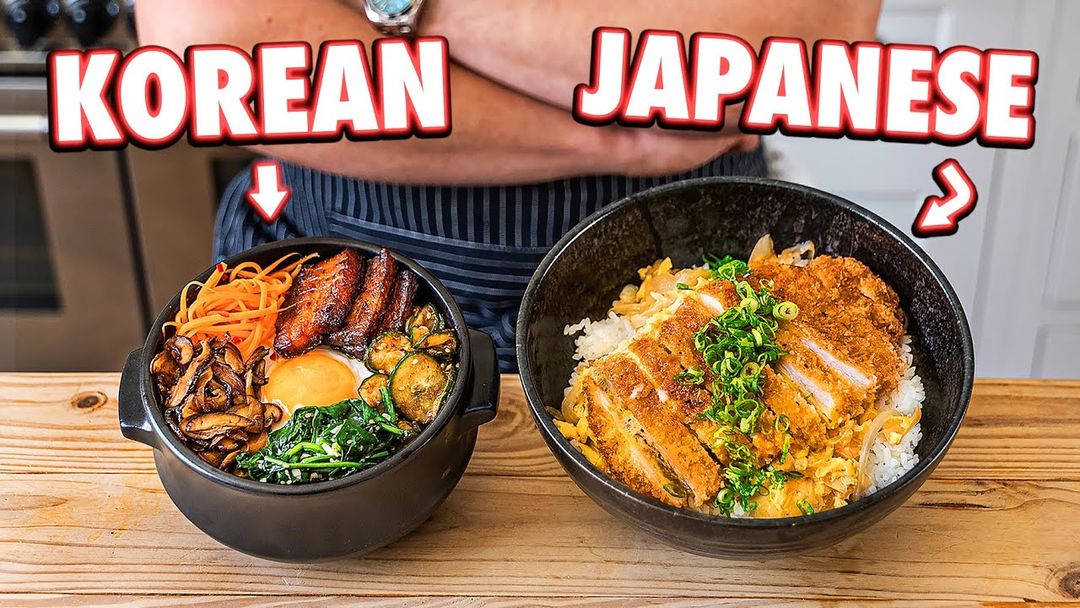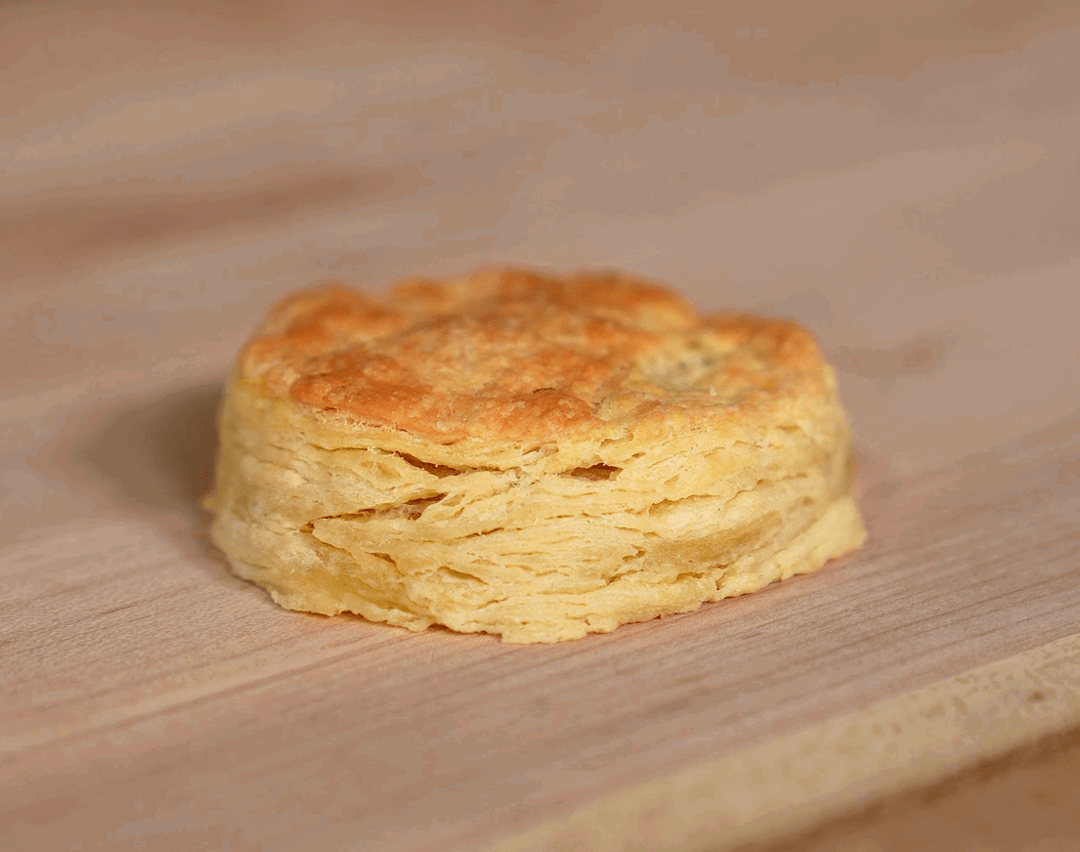Japanese Rice Bowl vs. Korean Rice Bowl
Rice bowls can be made thousands of ways, but these two are my favorite. Let’s see which one is better.
Joshua Weissman•
May 25, 2022
Ingredients (56)
Ingredients (56)
Japanese Rice Bowl: Rice
Japanese Rice Bowl: Dashi
Japanese Rice Bowl: Katsu
Japanese Rice Bowl: Assembly
Korean Rice Bowl: Rice
Korean Rice Bowl: Pickled Carrots
Korean Rice Bowl: Spicy Cucumbers
Korean Rice Bowl: Pork Belly
Korean Rice Bowl: Mushrooms
Korean Rice Bowl: Garlic Spinach
Korean Rice Bowl: Assembly
Directions
Rice
Before cooking the rice, add it to a fine mesh strainer. Place the strainer in a large bowl and fill it up with water. Toss the rice to remove excess starch and then lift the strainer and drain the rice. Empty the bowl and repeat this process one more time to clean the rice.
Place the cleaned rice into a rice cooker with the water and cook according to your machine. Keep in the rice cooker until ready to serve.
Dashi
Into a small saucepan add the kombu, bonito flakes and water. Heat just until the liquid reaches a point of steaming. Turn off heat and steep for 15 minutes.
Strain the dashi over a fine mesh sieve, reserving the liquid.
Katsu
Fill a heavy bottom pot just over halfway with vegetable oil. Heat to 350℉ (175℃). Have a baking sheet with a cooling rack next to the hot oil.
Pound the pork chops to ½” (12mm) thick.
Set up three medium-sized bowls in a row. To the first bowl add the flour. In the second bowl whisk together the egg and 15 grams of water. In the third bowl add the panko.
Season your pork chops on both sides with salt, then evenly coat with flour, shaking off the excess. Dip in the egg mixture to fully coat, leaving no dry spots, and then place into the panko pressing down to thoroughly coat. Place the breaded chops on a baking sheet. Set aside.
Fry your pork chops, two-at-a-time to avoid overcrowding, for 4-6 minutes until crispy and golden brown, and the internal temperature reads 155-160℉ (68-71℃). Remove with a spider and to the prepared baking sheet. Season immediately and generously with salt and a light sprinkling of togarashi.
Assembly
Set a medium nonstick skillet over medium-high heat. Add just enough oil to coat the bottom of the pan. Once hot, add the onion, season with salt and saute for 1 minute. Cover with a lid, and cook, stirring occasionally, until softened, about 2-3 minutes.
Add your dashi, mirin, shirodashi, sake, and soy sauce. Stir, bring to a boil, and reduce the mixture by half, about 3 minutes.
Slice the katsu into 1/2“ (12mm) thick slices and add it into the simmering pan. Pour the eggs all over the onions, lightly coating the katsu. Cover with a lid and cook for 1-2 minutes or until the egg is cooked (you want it tender, but not like a rubberband).
In a large bowl, add 2 cups of cooked rice, followed by half of your katsudon, and a nice layer of green onion to garnish.
Rice
Before cooking the rice, add it to a fine mesh strainer. Place the strainer in a large bowl and fill it up with water. Toss the rice to remove excess starch and then lift the strainer and drain the rice. Empty the bowl and repeat this process one more time to clean the rice.
Place the cleaned rice into a rice cooker with the water and cook according to your machine. Keep in the rice cooker until ready to serve.
Pickled Carrots
Place your carrots in a 1-quart, heat-proof container.
In a medium saucepan, over medium-high heat, add water, salt, sugar, rice vinegar, and the Fresno chili. As soon as the pickling liquid comes to a boil, remove from the heat and pour over the carrots to completely submerge.
Set aside at room temperature to cool completely before covering and storing in the fridge.
Spicy Cucumbers
In a medium bowl, add the cucumbers and season generously with salt. Set aside at room temperature for 10 minutes to draw out the water. Drain the excess water, then rinse with fresh water, and drain one more time.
In a small saucepan, add the vegetable oil and heat to 300℉ (149℃), and immediately turn off the heat.
In a separate, medium bowl, add the green onions, gochugaru, sesame seeds, garlic soy sauce, rice vinegar, and MSG and mix to combine. Stir in the hot oil and let it sit for 5 minutes.
Add your cucumbers and toss to coat completely. Set aside until ready to serve.
Pork Belly
Preheat the oven to 400℉ (204℃).
In a medium bowl add the gochujang, honey, soy sauce, rice vinegar, and green onions and mix to combine.
Cut the pork belly into 3” (7.5cm) rectangles and then into ½” (12mm) thick planks. Add to the marinade and toss to evenly coat. Marinate, at room temperature, for 15 minutes.
Arrange your pork pieces in a single layer on a cooling rack set over a foil-lined baking sheet. Bake in the oven for 15-20 minutes or until cooked through, crisp, and lightly charred. Set aside and keep warm until ready to serve.
Mushrooms
Add the oil to a medium nonstick skillet over medium-high heat. Once hot, add the mushrooms, and cook, stirring often, for about 4 minutes. Turn off the heat, add the soy sauce and stir to combine. Reserve and keep warm.
Garlic Spinach
Add the oils to a medium nonstick skillet over medium-high heat. Once hot, add the spinach and cook, stirring until the spinach is wilted. Add the sesame seeds and season with salt to taste. Turn off the heat, add the garlic and stir to incorporate.
Reserve and keep warm.
Assembly
In a medium-size bowl, add the cooked rice. Gently pat down the rice, creating a table for your ingredients to be laid on. Place 1 fried egg in the center. Around the perimeter of the bowl, place several pieces of pork belly, followed by a bundle of pickled carrots, spicy cucumbers, mushrooms and garlic spinach. Serve immediately.




